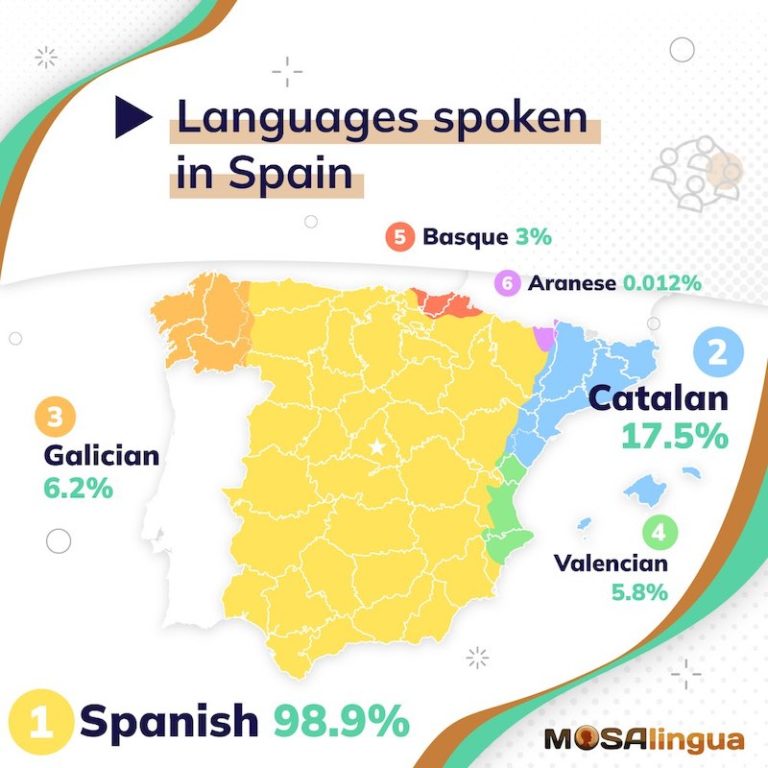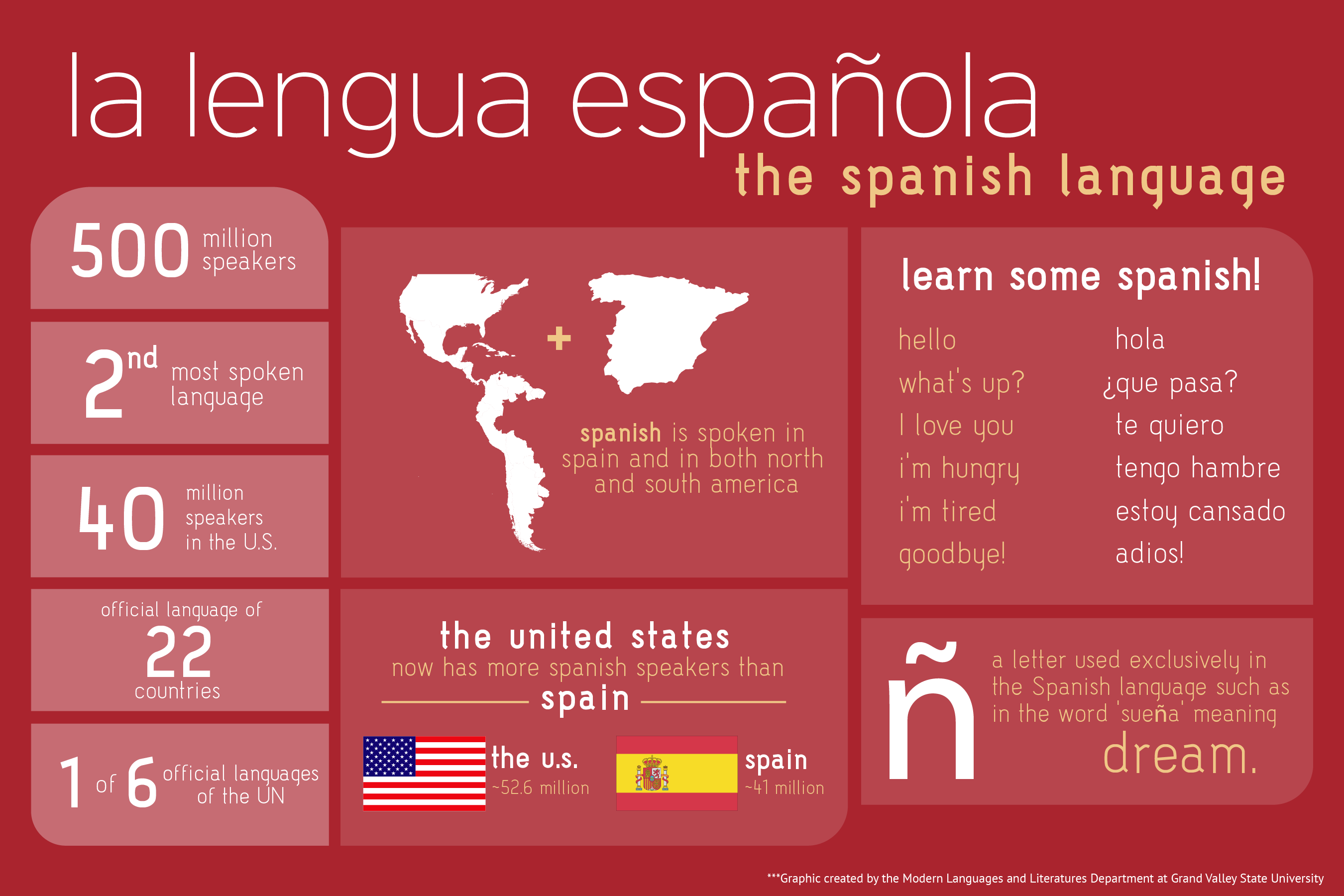More in spanish language – Embark on a linguistic journey as we delve into the intricacies of “more” in Spanish. From its versatile forms to its idiomatic expressions, this comprehensive guide will illuminate the nuances of this essential word, empowering you to navigate the complexities of Spanish communication with confidence and eloquence.
As we explore the comparative and superlative forms, you’ll master the art of expressing degrees of intensity, while idiomatic expressions will unlock the cultural depth and charm of the Spanish language.
More in Spanish Language
In Spanish, “more” is translated as “más.” It is an adverb that is used to express a greater quantity or degree of something. “Más” can be used in a variety of contexts, including comparative sentences, requests, and exclamations.
Comparative Sentences
In comparative sentences, “más” is used to compare two or more things. The following are some examples of how “más” is used in comparative sentences:
- María es más alta que Juan. (María is taller than Juan.)
- El coche rojo es más rápido que el coche azul. (The red car is faster than the blue car.)
- Tengo más dinero que tú. (I have more money than you.)
Requests
In requests, “más” is used to ask for something. The following are some examples of how “más” is used in requests:
- ¿Puedes darme más agua? (Can you give me more water?)
- ¿Puedes hablar más despacio? (Can you speak more slowly?)
- ¿Puedes poner más música? (Can you put on more music?)
Exclamations
In exclamations, “más” is used to express surprise or emphasis. The following are some examples of how “más” is used in exclamations:
- ¡Más! (More!)
- ¡No puedo creer que haya ganado! ¡Más! (I can’t believe I won! More!)
- ¡Es el mejor jugador del mundo! ¡Más! (He’s the best player in the world! More!)
Common Mistakes
There are a few common mistakes that people make when using “más” in Spanish. The following are some of the most common mistakes:
- Using “más” with adjectives. “Más” is an adverb and cannot be used with adjectives. For example, you cannot say “más grande” (more big). Instead, you should say “más grande” (bigger).
- Using “más” with verbs. “Más” is an adverb and cannot be used with verbs. For example, you cannot say “más hablar” (more talk). Instead, you should say “hablar más” (talk more).
- Using “más” with nouns. “Más” is an adverb and cannot be used with nouns. For example, you cannot say “más agua” (more water). Instead, you should say “más agua” (more water).
Comparative and Superlative Forms of “More”

In Spanish, the comparative and superlative forms of “more” are used to compare two or more things. The comparative form is used to compare two things, while the superlative form is used to compare three or more things.To form the comparative form of “more,” you add the suffix “-er” to the adjective.
For example, the comparative form of “tall” is “taller.”To form the superlative form of “more,” you add the suffix “-est” to the adjective. For example, the superlative form of “tall” is “tallest.”The definite and indefinite articles are used with the comparative and superlative forms of “more” in the same way they are used with other adjectives.
For example, you would say “the taller boy” to compare two boys, and “the tallest boy” to compare three or more boys.
Using the Comparative and Superlative Forms of “More”
The comparative and superlative forms of “more” can be used in a variety of ways. For example, you can use them to compare two or more people, places, or things. You can also use them to compare two or more actions or events.Here
are some examples of how the comparative and superlative forms of “more” can be used in sentences:* My brother is taller than me.
- This book is more interesting than that book.
- I like apples more than oranges.
- She is the tallest girl in her class.
- This is the most beautiful place I have ever seen.
- I am the happiest person in the world.
“More” in Idiomatic Expressions

The Spanish language is rich in idiomatic expressions, and “more” (más) is a common word used in many of these expressions. These expressions add color and nuance to everyday speech, and they can be a challenge for non-native speakers to understand.
In this section, we will explore some of the most common idiomatic expressions that use “more” in Spanish. We will also provide examples of how these expressions are used in everyday conversation.
“More” to Express Quantity or Degree, More in spanish language
- Más vale tarde que nunca.(Better late than never.)
- Más es más.(More is more.)
- Cuanto más, mejor.(The more, the better.)
These expressions are used to express the idea that something is better when it is done more or to a greater degree.
“More” to Express Emotion or Feeling
- Me gusta más.(I like it more.)
- Te quiero más.(I love you more.)
- Me duele más.(It hurts me more.)
These expressions are used to express the idea that something is more intense or important than something else.
“More” to Express Comparison
- Más alto que.(Taller than.)
- Más rápido que.(Faster than.)
- Más fuerte que.(Stronger than.)
These expressions are used to compare two things and express which one is greater in a particular quality.
“More” to Express Possibility or Probability
- Más probable.(More likely.)
- Más posible.(More possible.)
- Más probable que.(More likely than.)
These expressions are used to express the idea that something is more likely to happen or be true than something else.
“More” in Formal and Informal Contexts: More In Spanish Language
In Spanish, the word “more” can be expressed in different ways depending on the formality of the context. In formal contexts, the most common way to say “more” is “más”. This is typically used in written communication, such as letters, emails, and reports.
In informal contexts, there are several ways to say “more”, including “más”, “más que”, and “más de”. These informal forms are typically used in spoken communication, such as conversations and informal emails.
Formal Contexts
In formal contexts, “más” is typically used to express a quantitative increase or addition. For example, you could say “Necesito más tiempo” to indicate that you need more time. You could also say “Hay más gente aquí que ayer” to indicate that there are more people present than there were yesterday.
Informal Contexts
In informal contexts, “más” can be used to express a quantitative increase or addition, but it can also be used to express a qualitative increase or addition. For example, you could say “Me gusta más este libro que el otro” to indicate that you like this book more than the other one.
You could also say “Estoy más cansado hoy que ayer” to indicate that you are more tired today than you were yesterday.In addition to “más”, there are several other ways to say “more” in informal contexts. “Más que” is often used to express a comparison between two things.
For example, you could say “Tengo más dinero que tú” to indicate that you have more money than the other person. “Más de” is often used to express a quantity that is greater than a specific number or amount. For example, you could say “Tengo más de 100 libros” to indicate that you have more than 100 books.The
choice of which form of “more” to use depends on the formality of the context and the specific meaning that you want to convey. In general, “más” is the most formal way to say “more”, while “más que” and “más de” are more informal.
Concluding Remarks

In conclusion, understanding the multifaceted nature of “more” in Spanish is key to unlocking the expressive power of this vibrant language. Whether in formal or informal contexts, this guide has equipped you with the knowledge and insights to convey your thoughts and ideas with precision and flair.
Question Bank
What are the different forms of “more” in Spanish?
Spanish has several forms of “more,” including “más,” “mayor,” and “más grande.” Each form has its own specific usage and context.
How do I form the comparative and superlative forms of “more” in Spanish?
To form the comparative form, use “más” before the adjective. For the superlative form, use “el/la más” before the adjective.
Can you provide an example of an idiomatic expression using “more” in Spanish?
One common idiomatic expression is “más vale tarde que nunca,” which means “better late than never.”